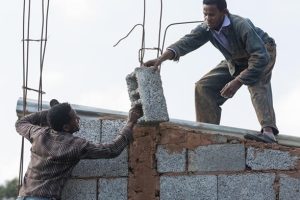
As a relatively long-serving individual in the education sector, I am poised to raise few points concerning the recent education roadmap. Since recent months, now gradually becoming parliament agenda, we keep on hearing of the new education roadmap of the country which pinpoints system overhauling of the ministry, the education structure and quality issues, finance and language of instruction or education language.
I believe that the move to come up with such a long-term education program with its requisites is a commendable job on the part of the ministry of education. It’s quite obvious that periodic education sector review helps to meet local, national and global needs of citizens and the nation at large.
But one minor reservation is on its timing. As is always the case, education reform in Ethiopia comes on early next morning of change taking place in the political arena. In fact, many also argue that the immediacy to education is somewhat normal or logical after a given reform since it’s the second button to press after the media takeover by the new government.
At other times, education in Ethiopia is either in a ponderous journey or in quite deep silence as though it were a ‘sacred’ covenant and ‘time-less’ state of affairs that rarely requires tampering with or undergo reforms. The consequences are that decisions and reforms made under uncharted reform mindsets become hasty, less consultative, and at most, clouded by excessive euphoria or passions to effect changes within a short period of time.
It also goes that past achievements (positive or negative) end up with a sense of remorse and apologetic views as if there were no any building blocks put on the ground. Hence, not based on comprehensive and critical evaluation outcomes to which all partners come to consensus, changes are driven on narrow pedestrian where popular participation and implementation suffers at the end of the tunnel.
But this, however, does not mean that no periodic education sector reform is important to conform to the dynamism and change imperatives of the time. Consequently, there are positive and rational concerns which I believe are necessary to be looked into as keep preparing to its full-blown implementation.
In general, the roadmap seems a response to many of the educational enigmas that we are in. However, there are certain concerns over some of the planned intervention areas, which include the education structure and quality, education finance and education languages (medium of instruction). Other points may be dealt with some other time.
First, the proposed education structure seems that the roadmap comes back to the status quo-ante of the pre-FDRE regimes educational structure arrangements. This proposed structure may be considered a qualitative leap from the last three decades though it is not the first of its kind when looking back to the education trajectories of the country. Indeed, speculations have always been with us for over seventy years now with the exception of the reconstruction era and controlled expansion of late 1940s and early1950s.
The first critical question that needs further explanation aside the draft and subsequent roadmap documents is the rationale for changing the on-going education structures. We have been hearing some plausible explanations by the ministry. One of the justifications was age factor.
If rightly learnt from the frequent explanations, reasons are as follow: it’s because students are “under-age” by the time they complete general education (Grade 10); and as a result, ‘they were not found fit to middle-level training before they join the world of work’. However, leaving aside the arbitrary age registry in the more than 80 percent of our population, which is typically rural, there seems no hard proof why students beginning from their formative age level are not creative and inventive enough by the specific age mentioned above.
It’s true that life styles do substantially vary. But real talents of children are clearly witnessed in their earlier years, even as early as pre-school age period. Not mentioning a name, a kindergarten child level recently has appeared on a TV technology program to become nearly a university-level of universe (space, solar system, and planets) scholar. It’s believed that there are more of such talented children and regular students in the country and elsewhere in the world.
Such realities (may of course be rare or exceptional) would force us to raise the basic question that to what extent has age issue triggered the change of the education structure in the roadmap? Is that for about 20 percent of the school population of urbanites that age-level be determined against the 70-80 percent of the entire population?
Which age-level is more suited to technological acquisition and joining the world of work other than that of the ILO minimum employment age bracket? The frequent report of the ILO is not about children (students) who complete their schooling time in each country but those children who mostly could not visit school compounds at all or the ones dropping out of school for good and seek immediate livelihood means as they have no standby guardian.
In fact, in our case, by the time they complete grade ten and with a minimum of two-three-year trainings, students are above 18 years with conservative age estimate in Ethiopia. This is not contradictory to the period of joining the world of work in Ethiopia or elsewhere by an ILO standard. Another basic and related question is, by allowing all students to the final destination of secondary school (grade 12), what exceptional provisions are put for them in place other than joining middle-level training variants and joining universities?
How much difference does the addition of a year or two bring in achieving the intended quality objective? Is age-level a reliable quality input? What happens if the new structures (schools, TEVETs variants and universities) and the planned job opportunities to be created fail to absorb all adolescents of 12th grade completing cohorts and college/university graduates? Simply speaking, what contingency plan have we put aside from now on and until the roadmap life span and beyond?
The Ethiopian Herald November5, 2019
BY DEREJE TEREFE





